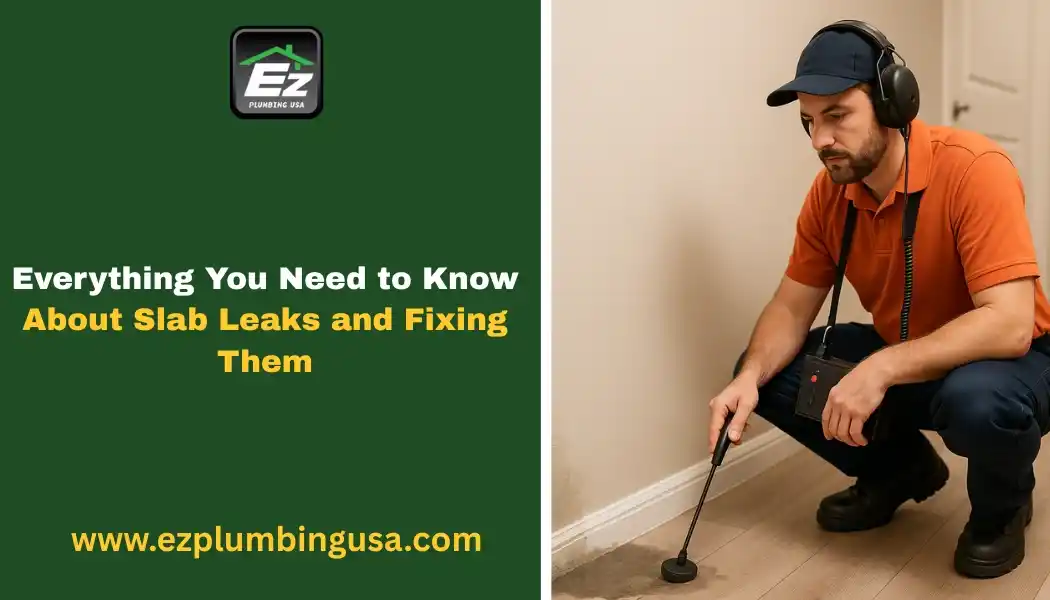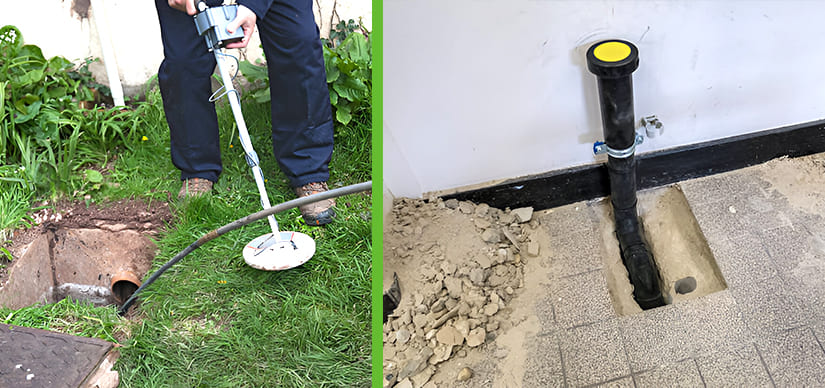Everything You Need to Know About Slab Leaks and Fixing Them
Views : 502

What is Slab Leak?
Common Causes of Slab Leaks
- Corrosion: Almost all pipes, especially copper, can corrode due to the water chemistry over time.
- Abrasion: The rubbing of pipes against concrete and rebar can wear down from ceaseless vibration.
- Poor installation: Sloppy work done during the original construction can cause an early failure.
- Shifting soil: Movement of the ground can put stress on the pipes, until they cry out with cracks.
Signs You Have a Water Leak Under Slab
- High water bill for no reason
- Water running sounds when all the taps are turned off
- Warm or wet carpet areas
- Cracked floor or wall
- Moldy or mildew smell
Why Early Slab Leak Detection Matters
How Professionals Detect a Slab Leak
- Electronic amplification apparatus to listen for the leak
- Infrared thermography to sense the temperature variations
- Video pipe inspection cameras for a closer look
Concrete Slab Leak Repair Options
- Spot Repair
The plumber can excavate into the slab, repair the pipework, and reseal it with a thin uniform coat of concrete, should the leak prove to be tiny and localized. - Rerouting
Sometimes, it might be wise to admit defeat and run new pipe above ground or through the walls rather than dig up the slab to fix a pipe that can't be found. - Pipe Lining
This entails inserting an epoxy-coated liner which seals the leak from inside.
How Much Does Slab Leak Repair Cost?
- Detection: $150-400
- Spot repair: $500-2,500
- Rerouting: $500-5,000
- Pipe lining: $2,000-6,000
DIY Slab Leak Detection: Is It Possible?
- Check for water usage with the water meter. If it is spinning, you might have a leak.
- Scan suspicious warm spots on your floor with a thermal camera.
- Tap the floor with a screwdriver handle and listen for hollow spots.
Long-Term Prevention Tips
- Installation of pressure regulators to prevent stress on the pipe.
- Annual inspection for corrosion and wear to all pipeline fittings.
- Softening hard water, which is accelerating corrosion.
Conclusion
FAQs
Q1. What is a slab leak and what causes it?
A slab leak refers to water leaking from pipes located beneath your concrete foundation. Common causes include pipe corrosion, poor installation, or shifting soil beneath your home.
Q2. How can I tell if I have a slab leak?
Signs of a slab leak include unusually high water bills, warm or damp spots on your floors, or the sound of running water when no fixtures are on.
Q3. Does homeowners insurance cover a slab leak?
Most policies cover the damage caused by the leak but not the cost of repairing the leaking pipe itself. It’s important to review your individual policy for specific coverage details.
Q4. Can I repair a slab leak myself?
While basic leak detection can be attempted, repairing a slab leak should be left to professionals. DIY repair can worsen the problem and lead to higher costs.
Q5. How long does slab leak repair take?
Repair time depends on the method and severity. A spot repair might take a few hours, while rerouting or epoxy pipelining can take up to several days.




